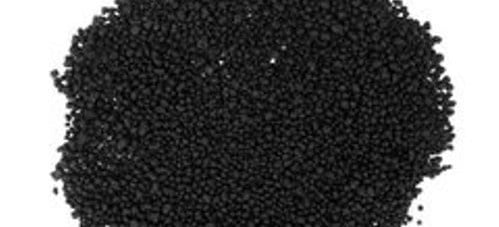Menu

Industrial Minerals:
Leonardite is formed from pre-historic organic matter (the remains of plants, animals, and microorganisms) in salt water deposits . It is from dried up oceans that were buried under soil and rock and have never been exposed to heat and found as a low rank coal outcome of lignite deposits and applied to products those which have a high content of humic acid. It is separated from lignite by its high oxidation degree and the higher carboxy groups. It was named by Dr. A.G. Leonard who was studying of lignite deposits in the State of North Dakota, USA. Leonardite is called in the USA and in many countries of the world, but in some countries it is named as the Humate, Organic Humate, Humalite or the Humus. However , Leonardite is recognized and started to extend widely very recently.
It is usually very close to the surface. Due to the large amount of living bacteria, it was formed instead of coal in certain precipitation, layers. Being a highly decomposed compressed natural organic humus and having a high humic acid content that processed by microbial activity makes it one of the most bio-chemically active elements. The composition of Leonardite will show on average organic matter 75-90%, aluminum, nitrogen, phosphorus, potassium, sulfur, iron and calcium less than 1%. As it is a naturally mined material, the composition of Leonardite differs slightly in the same deposit or from deposit to deposit. The organic material that was deposited is the same, yet the humified organic matter we extract today has many different characteristics depending on the deposit.
It is a class of compounds with various structure, functionalities and reactivities. Leonardite humic matter is characterized as three kind of organics; fulvic, humic, and humus.It is 85% humus making it the best and cheapest source of humus on the market.
Leonardite is applied instead of fertilizer of an animal origin, it is a regulator of the earth and addition to organic substance. Integrally more richly than fertilizer of an animal origin, besides in addition it contains humic fulvic acid. It does not contain nematode and seeds of plants.
It is rarely met organic production on the earth which solves a problem of the erosion, raised ph and salinities because of the excessive use of chemicals. It is known as an earth regulator.
Another advantage of Leonardite is its long-term effectiveness, as it does not consume up so quickly as animal manure, compost or peat. As Leonardite is completely decomposed, it does not enter into nutritional competition with plants for nutrients such as for nitrogen. This is not the case with incompletely decomposed compost, whereby the organic substances in soil are rapidly consumed up by micro-organisms and mineralized entirely without humus formation.
Leonardite ranges considerably in humic and fulvic acid content. For example, deposits can have as low as 40% humic acid content and as high as 80%. When you have less good ingredient, you have more ash and heavy metals. Therefore, when you buy Leonardite with a humic acid content of 50%, you are also buying standard ash with no additional value. Leonardite is a 100% organic matter, that is easily soluble in alkaline solutions.
APPLICATIONS
Leonardite has become an important production asset for a number of industries, due to its unique characteristics.
Agriculture, Oil Field and Foundry applications.
Soil Conditioner
Leonardite is used to condition soils either by applying it directly to the land, or by providing a source of humic acid or potassium humate for application thanks to having the highest humic acids content of any natural source. . It adds the organic matter to soil, hence sodic and calcareous soils are benefited from it highly. It also supplies ideal conditions for “good” bacteria to grow. Leonardite adds organic matter to marginal soils improving texture, moisture holding capacity and pH stability. As a fertilizer enhancement, Leonardite improves a crop’s ability to absorb nutrients, resulting in faster growth, healthier and higher yields. Although humic acids can be extracted from peat, composts or soils; none of these sources are so concentrated and abundant as leonardite. It is plentiful and inexpensive compared to other possible humic acid sources.
Oil Field
Leonardite is called as Lignite and is widely used in water – based drilling mud when it is used In the oil field. The properties of it makes it easy in fluid loss control, serve as clay deflocculants and improve filter cake quality. Lignite can be blended with caustic soda, and because of its unique organophilic properties Leonardite, or “Lignite”, can also be modified for use in oil-based drilling fluids.
Foundry
Leonardite is used as an additive in green sand molding in foundries. It reduces clay viscosity, increases mold permeability, absorbs and retains water and improves mold shakeout. it helps to improve the foundry environment for employees working in the plant.
Soil Remediation
Leonardite can be added directly to soils to reduce the take-up of metals by plants in contaminated ground, particularly when combined with compost.